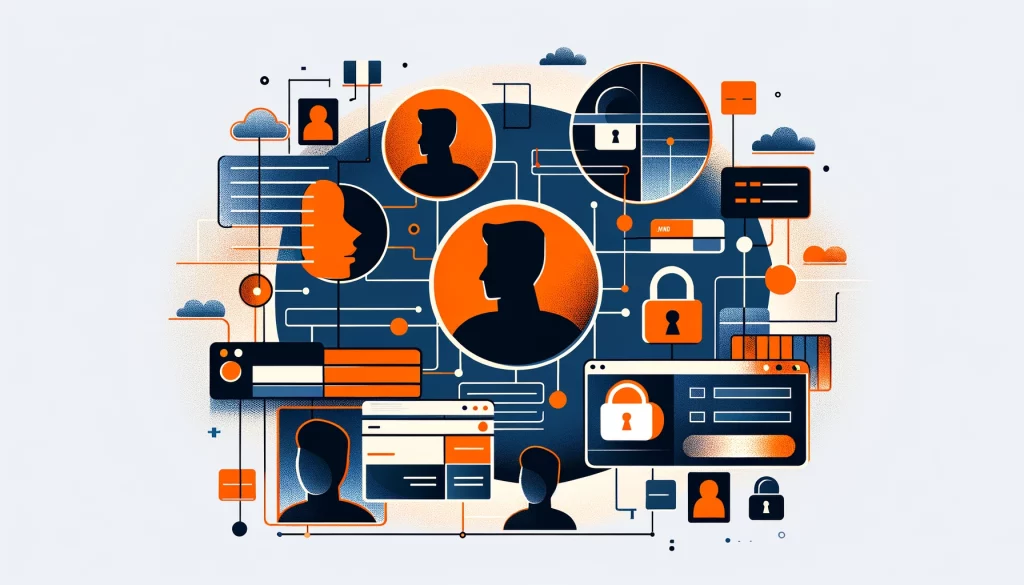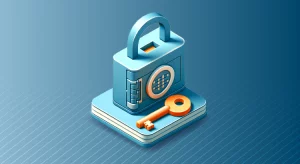
K Anonymity

Sharing information with third-party analysts and researchers could lead to groundbreaking insights in various fields, from urban planning to healthcare. The challenge lies in releasing databases publicly without compromising individual privacy. This is where K Anonymity comes into play, offering a robust solution to protect sensitive information while enabling data sharing.
What is K Anonymity?
K Anonymity is a privacy model that safeguards the privacy of individuals in data-sharing scenarios by anonymizing the data. The concept revolves around making each record in a dataset indistinguishable from at least K-1 other records.
K Anonymity ensures that each group of quasi-identifiers is present in at least K records. Quasi-identifiers are attributes that can indirectly identify a person. This means that the data is anonymized to protect individuals’ identities.
The goal is to prevent re-identification of individuals in the dataset. By doing so, the dataset becomes K-anonymous, providing a mathematically proven privacy guarantee.
The main goal of K Anonymity is to stop re-identification attacks. This is when someone tries to match anonymous records with public information to figure out who the individuals are.
K Anonymity ensures that each record is grouped with at least K other records that share the same quasi-identifier values. This makes it much more difficult for an attacker to identify a specific individual.
The Importance of K Anonymity
Some people think that just deleting names and social security numbers is enough to keep data private. However, this approach is inadequate.
According to Professor Latanya Sweeney, a combination of seemingly non-identifying attributes like date of birth, gender, and zip code can uniquely identify at least 87% of the US population in publicly accessible databases.
K Anonymity ensures that individuals cannot be singled out based on their quasi-identifiers to address this issue.
The importance of K Anonymity extends beyond protecting individual privacy. It enables organizations to share valuable data with researchers, analysts, and other stakeholders without compromising confidentiality.
Sharing data can result in major advancements in different fields, like healthcare. Anonymized patient data can be utilized to create new treatments and enhance patient outcomes.
In finance, anonymous transaction data can be studied to find fraud and evaluate risk without revealing private customer details.
K Anonymity in Action
To better understand how K Anonymity works in practice, let’s consider a fictitious dataset containing information about patients admitted to a healthcare facility. The original dataset includes attributes such as age, zip code, and diagnosis.
To achieve 4-anonymity, the dataset is changed so that each age and zip code combination is in at least four records. This is done by generalizing the age values into brackets (e.g., [20-30]) and suppressing the last two digits of the zip codes (e.g., 130**).
The dataset has been anonymized to prevent identifying individuals based on their age and zip code. Instead, they are part of a group of at least four individuals with the same quasi-identifier values.
This makes it much harder for an attacker to single out a specific person, even if they have access to external information.
Considering the level of anonymization, known as the K value, is important when dealing with sensitive data. Choose the K value based on the potential risk of re-identification. This decision is crucial to protect the privacy and security of the data.
Higher K values provide stronger privacy protection but may also reduce the utility of the data. Finding the right balance between privacy and data utility is a key consideration when implementing K Anonymity.
Implementation
Several techniques are commonly used to implement K Anonymity, including generalization, suppression, and global recoding.
Generalization involves replacing specific values with more generic ones, such as converting ages into age brackets or zip codes into larger regions. This technique reduces the uniqueness of each record while still preserving some level of detail.
Suppression, on the other hand, completely removes an attribute’s value from the dataset. This technique should be used sparingly and only for irrelevant data points.
Overly aggressive suppression can significantly reduce the utility of the data, making it less valuable for research.
Global recoding is another method that groups continuous or discrete numerical variables into predefined classes. In this approach, a specific value is replaced with a more generic value chosen from the entire dataset.
You can do global recoding in two ways. In the first way, we map each attribute individually. In the second way, the mapping is done on a function of multiple attributes combined.
When implementing K Anonymity, it’s crucial to consider the specific requirements and constraints of the data sharing scenario.
When you choose how to make data anonymous, you should assess the risks and understand how the data will be used.
K Anonymity and L-Diversity
While K Anonymity provides a strong foundation for privacy protection, it has some limitations. One such limitation is the lack of diversity within the sensitive attributes of each group.
To address this, the L-diversity model is often used in conjunction with K Anonymity. A dataset is said to satisfy L-diversity if there are at least L well-represented values for each sensitive attribute within each group of records sharing the same quasi-identifiers.
L-diversity ensures that even if an attacker knows an individual’s quasi-identifiers, they cannot infer the sensitive attribute value with high confidence. This additional layer of protection makes it harder to re-identify individuals based on their sensitive information.
For example, consider a dataset where each group of records with the same quasi-identifiers has a diverse set of values for the sensitive attribute “disease”.
When a dataset has L-diversity, an attacker with an individual’s age and zip code cannot accurately determine the specific disease. This is because there are at least L different disease values in that group.
K Anonymity vs. Differential Privacy
Another approach to privacy protection is differential privacy. While K Anonymity focuses on making individuals indistinguishable within a dataset, differential privacy aims to limit the disclosure of sensitive information about individuals.
Differential privacy includes adding noise to the data. This makes it difficult to determine if a specific individual’s data is included in the dataset.
Differentially private algorithms are designed to share aggregate information about a dataset while minimizing the impact of any single individual’s contribution. This approach is particularly useful when organizations want to share statistical insights without revealing sensitive details about specific individuals.
One key difference between K Anonymity and differential privacy is the level of protection they provide.
K Anonymity keeps people from being identified in a dataset. However, it may not completely stop others from figuring out sensitive information about them.
Differential privacy provides a higher level of privacy protection. It restricts the amount of information that someone can learn about an individual. This protection applies regardless of the attacker’s knowledge.
Real-World Applications of K Anonymity
K Anonymity has found applications in various domains where privacy is of utmost importance. In the healthcare industry, researchers use K Anonymity to share medical data for research purposes while protecting patient privacy.
By anonymizing patient records, healthcare organizations can collaborate with researchers to develop new treatments and improve patient outcomes without compromising individual privacy.
K Anonymity is used in the financial sector to safeguard customer data while also enabling fraud detection and risk assessment.
Banks and financial institutions can share anonymized transaction data with third-party analysts to identify patterns and anomalies without exposing sensitive customer information.
K Anonymity is also used in the realm of social science research, where sensitive survey data must be shared while protecting the privacy of respondents.
By anonymizing survey responses, researchers can analyze the data and draw meaningful conclusions without compromising the privacy of participants.
Challenges and Considerations
Implementing K Anonymity comes with its own set of challenges. One of the main issues is the trade-off between privacy and data utility. As the level of anonymization increases (i.e., higher K values), the usefulness of the data may decrease.
Balancing privacy and data usefulness requires careful thought and depends on how the data will be used.
Another challenge is the potential for re-identification attacks. While K Anonymity provides a strong foundation for privacy protection, it is not foolproof.
Data mining methods are getting better. More public datasets are available. You can link these datasets with anonymous data.
This is causing worries about privacy. Therefore, it is crucial to regularly assess and update anonymization strategies to stay ahead of potential attacks.
Moreover, implementing K Anonymity can be intensive, especially for large datasets with many attributes. Efficient algorithms and data structures are necessary to handle the anonymization process in a scalable manner.
Conclusion
K Anonymity is a powerful tool for protecting individual privacy in data sharing scenarios. By making each record indistinguishable from at least K-1 other records, K Anonymity provides a mathematically proven privacy guarantee.
It enables organizations to share valuable data with researchers, analysts, and other stakeholders without compromising security, leading to significant advancements in various fields.
However, it is essential to recognize that K Anonymity is not a silver bullet. It should be used with other privacy methods like L-diversity and differential privacy to give full protection.
Carefully assessing the risks when deciding how to keep data anonymous is important. It is also important to understand how the data will be used.
As organizations gather more and more personal data, it is crucial to prioritize privacy protection. K Anonymity offers a practical approach to anonymizing datasets while still preserving their utility for research.
In conclusion, K Anonymity is a valuable tool in the arsenal of privacy protection methods. Data is becoming more important in decision-making across industries, so the need for strong privacy protections will also increase.
Organizations can protect privacy rights by using K Anonymity and other privacy techniques. These methods help manage the challenges of sharing data. By implementing these techniques, organizations can ensure that they keep sensitive information secure. This is important in today’s data-driven world.
